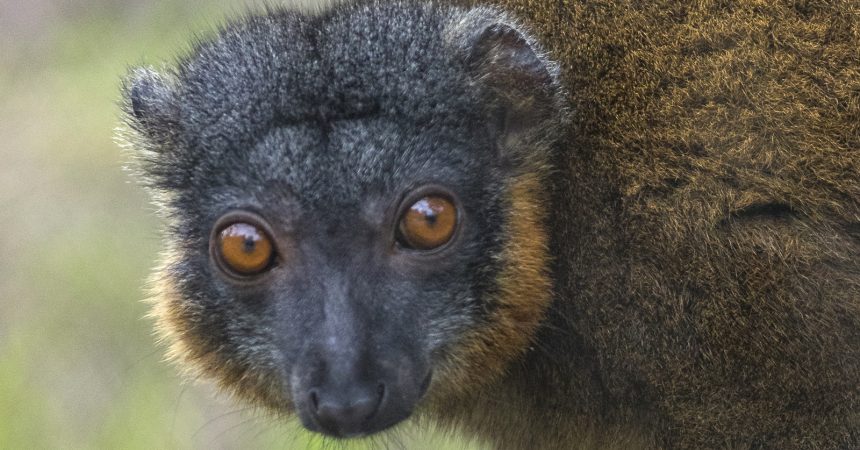World Lemur Day will be taking place on October 27; we invite each and every one of you to join us in celebrating these fascinating animals at the San Diego Zoo’s Madagascar habitats in Africa Rocks.
Every zoo keeper dreams of seeing the animals in their care enjoy a brand new, state-of-the-art exhibit, and for the San Diego Zoo lemur keepers, that dream came true in September! The lemurs, who had been living in an off exhibit area at the Zoo, would soon enjoy two exhibits that would showcase five species from different regions of Madagascar. To prepare the lemurs for the move, we spent many loving hours training them to voluntarily enter a transport crate—interaction that helped strengthen the relationship and trust between keeper and lemur. So when moving day came, each lemur was more than ready to “move it, move it” to Africa Rocks.
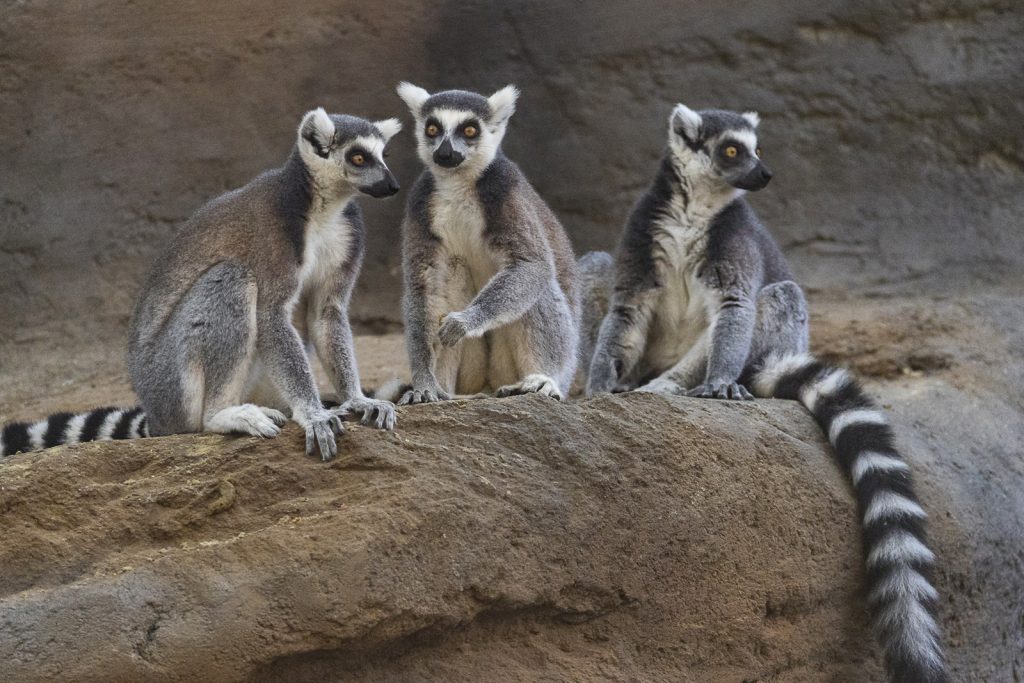
Ring-tailed lemurs
Readers that have already visited the new area may have had the pleasure of seeing four out of the five species that will be living in Africa Rocks. In the North exhibit (farthest from the waterfall) you may see two red-collared lemurs, two red ruffed lemurs, and a group of five ring-tailed lemurs on rotation.
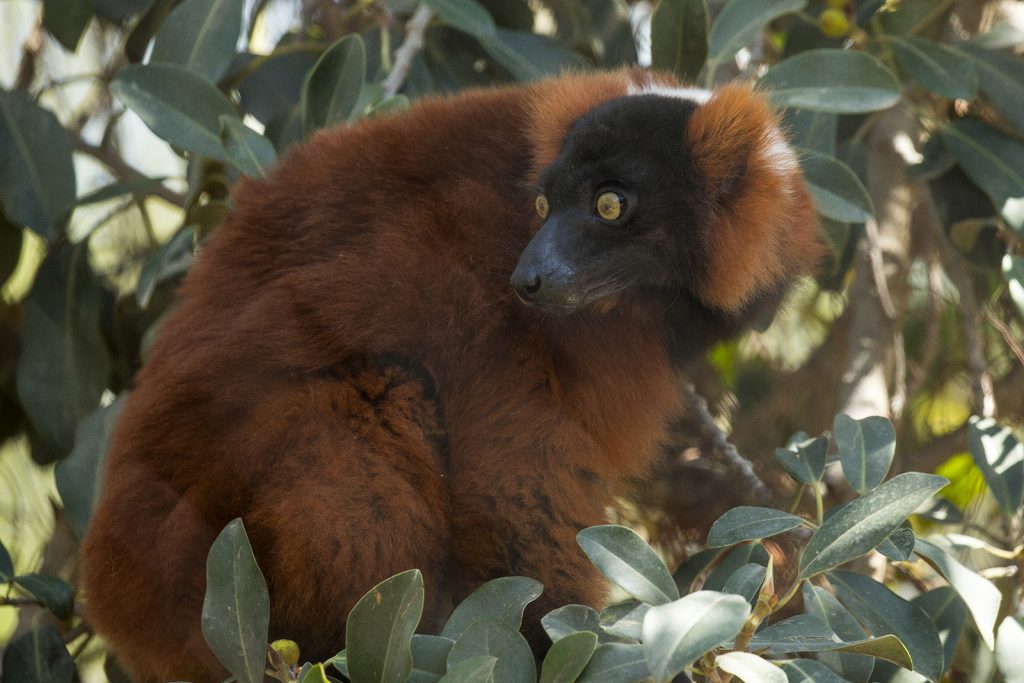
Red ruffed lemur
In the South exhibit (closest to the waterfall), you may see the two blue-eyed black lemurs and a group of three ring-tailed lemurs on rotation. The Coquerel’s sifaka will be joining them soon. The ultimate goal is to have all species in each exhibit coexist in a multispecies habitat. Since these species do not coexist naturally in the wild and wouldn’t compete for natural resources, we have high hopes that that each will establish their own range and thus have successful introductions and cohabitation. We’ve already seen promising interactions between certain species.
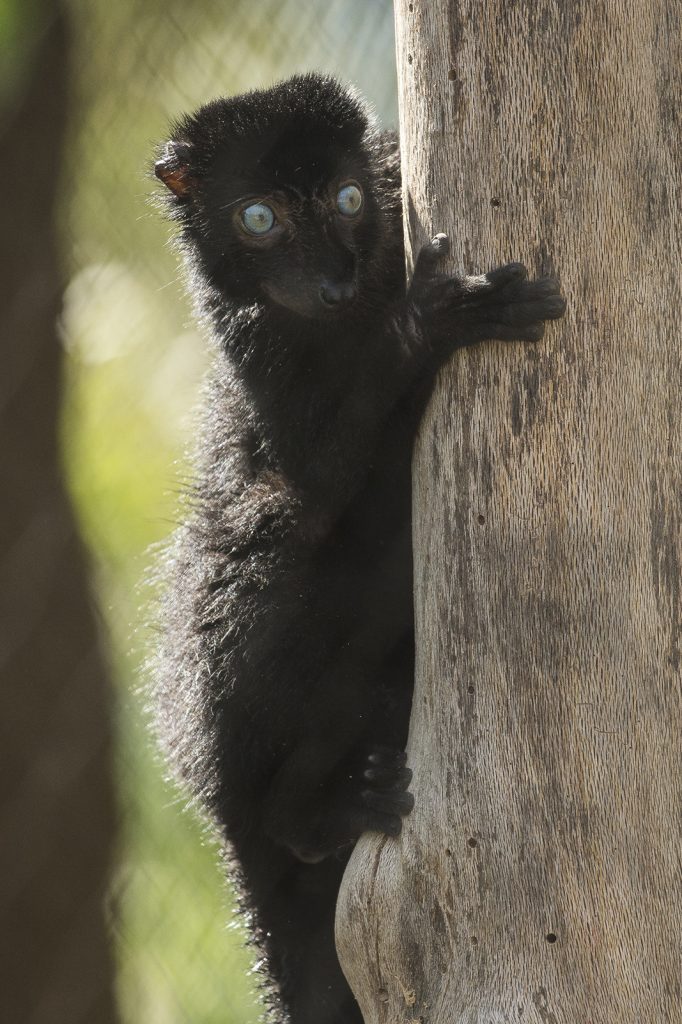
Blue-eyed black lemur
All the lemurs have been exploring and learning their way around the exhibit, as well as showing off their personalities to Zoo guests. We’ve always known that Ony, the young red ruffed lemur, liked interacting with people but it blew all of our minds when we saw him wander over to the area where guests—and I—were standing, sit in front of us and “pose” as he watched us, too! He stayed there for a while. It was an awesome experience that allowed us to get a closer look at this gorgeous creature.
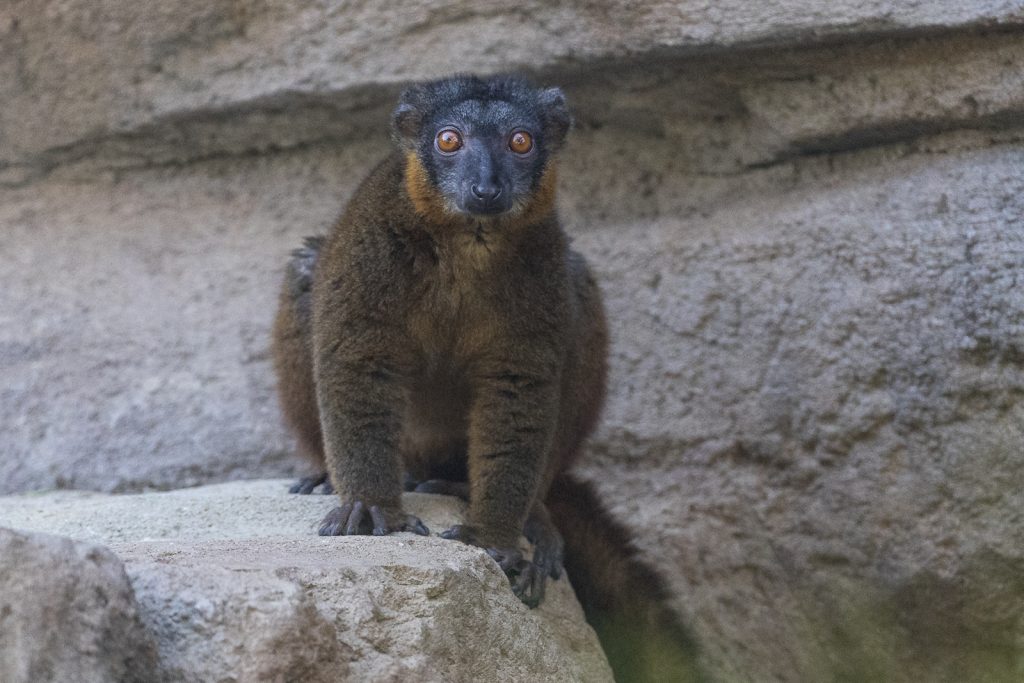
Red-collard lemur
It’s been incredible to see the lemurs display species-specific natural behaviors on exhibit. In the early morning, the ring-tailed lemurs sunbathing on the highest rock structure in their yoga type poses: sitting with open arms welcoming the sun on their bodies. The red ruffed lemurs hang out in the fig tree in the middle of the exhibit, indulging in as many berries as they desire. The blue-eyed black lemurs enjoy scent-marking their surroundings, including each other, so it’s been cool to see them rub their hands and wrists vigorously back and forth on the rock structures they encounter, leaving their scent for all to enjoy. And it’s been adorable to watch the red-collared lemurs venture out to nibble on some of their morning diet and vocalize at the big new world.
Having these lemurs on exhibit is essential to bringing much needed attention to these vanishing prosimian primates. Unfortunately, some species of lemurs are on the Top 25 Most Endangered Primates list due to hunting, habitat loss, and the illegal pet trade. On October 27, 2017, we will celebrating World Lemur Day for the first time in Africa Rocks, and we invite you to join us in some wild fun while bringing awareness to an iconic species.
Yeleny Smith is a keeper at the San Diego Zoo. Read her previous blog, For the Love of Orangutans.

